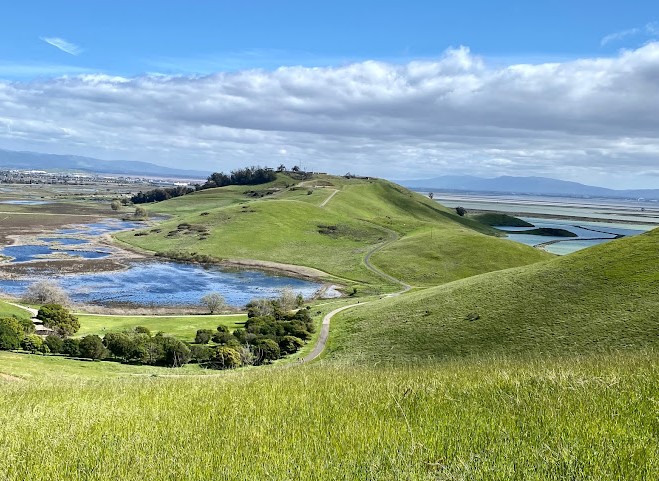Nestled in the heart of Fremont, California, Coyote Hills Regional Park is nothing short of a veritable Eden on earth. Boasting an awe-inspiring landscape that spans over a thousand acres, this outdoor sanctuary invites visitors to immerse themselves in its wealth of natural beauty and serenity.
The park’s dramatic setting – comprising marshlands, grass-covered hills, and sweeping views of the San Francisco Bay – serves not only as an idyllic escape from urban life but also provides countless opportunities for recreational activities and eco-education.
Beyond its aesthetic allure lies another facet that renders Coyote Hills Regional Park truly exceptional: it stands as a living testament to the region’s rich biodiversity and historical significance. Serving as home to numerous species of flora and fauna, it offers invaluable insights into local ecology while fostering appreciation for nature conservation.
Likewise, with remnants from Native American settlements dating back more than 2000 years ago scattered within its bounds, the park opens a fascinating window into the past. Therefore, whether seeking adventure amidst stunning landscapes or pursuing knowledge about local history and ecology, one will find a sense of belonging within the embrace of Coyote Hills Regional Park.
Activities and Attractions in this Outdoor Sanctuary
Coyote Hills Regional Park offers a plethora of activities and attractions, including hiking trails that wind through lush greenery, bird watching opportunities with over 200 species recorded, an informative visitor center, and the historic Patterson House museum.
The park boasts more than thirteen miles of scenic trails, ranging from leisurely walks to challenging hikes, all offering breathtaking views of the San Francisco Bay Area. Bird enthusiasts would be delighted as the unique location along the Pacific Flyway makes it a hot spot for migratory birds.
Moreover, nestled within this natural sanctuary is the visitor center where one can gain a deeper understanding of local flora and fauna through interpretive exhibits.
Adding to its allure is the Patterson House Museum – an edifice that harks back to California’s agricultural past. This late 19th-century mansion provides visitors with an intriguing glimpse into lives lived long ago while standing as a symbol of community history and heritage.
Furthermore, numerous educational programs are conducted within the park premises aimed at enhancing public knowledge about native wildlife and environmental conservation efforts. Such initiatives foster communal learning experiences that engender a sense of belonging among participants thus drawing them closer to nature and their own community.
Biodiversity and Historical Significance of the Park
Boasting a remarkable array of biodiversity and steeped in rich historical significance, this sanctuary offers an invaluable insight into the intricacies and beauty of California’s natural landscape.
Home to over 200 species of birds and numerous mammals, reptiles, amphibians, and insects, Coyote Hills Regional Park is a haven for nature lovers. The park’s diverse habitats include marshland, grassland, woodland areas which are all teeming with life. As seasons change so does the scenery; spring brings wildflowers in abundance while fall sees the arrival of migratory birds. Endangered species such as the Salt Marsh Harvest Mouse and California Clapper Rail find refuge here making it not only an ecologically important area but also a vital conservation effort.
The park’s historical significance is equally compelling. It contains remnants from Native American civilization including shell mounds left by the Ohlone Indians who inhabited this region for thousands of years before European contact. These shellmounds are archaeological treasures providing glimpses into their culture and lifestyle.
Furthermore, vestiges of early ranching history can be seen in remnants of old fence lines and fruit trees that once belonged to large farming estates from the early twentieth century. This blend of cultural heritage juxtaposed against its stunning natural backdrop makes Coyote Hills Regional Park more than just a recreational area; it is a living museum where one can feel connected to both history and nature simultaneously.


